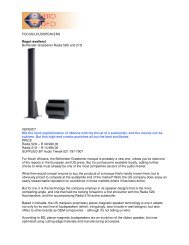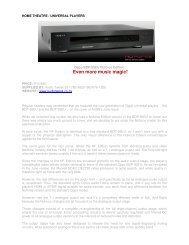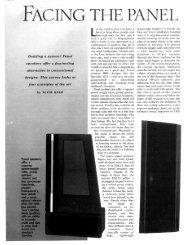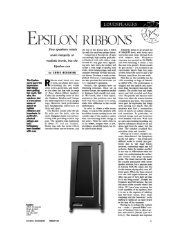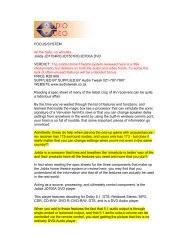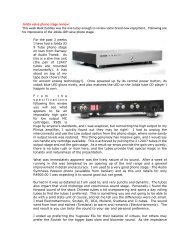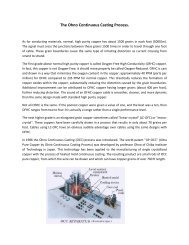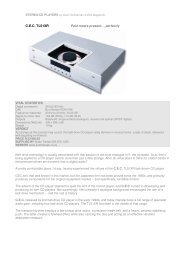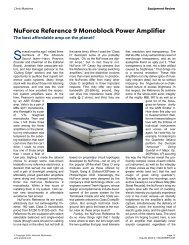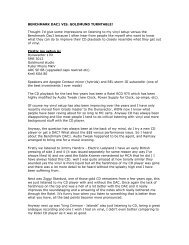Wayne Donnelly - Audio Tweak
Wayne Donnelly - Audio Tweak
Wayne Donnelly - Audio Tweak
You also want an ePaper? Increase the reach of your titles
YUMPU automatically turns print PDFs into web optimized ePapers that Google loves.
Listening<br />
High-powered amplifiers are familiar ground to this writer. For the last few years, my everyday<br />
amplifiers have been successive iterations of the 750-watt VTL monoblocks. I expected a<br />
quite different sonic presentation from the Musician III, and that proved to be the case —<br />
although the digital amplifier was surprising in several respects.<br />
The Musician III from the beginning exhibited a very wideband, high-speed musical<br />
presentation. That in itself was no surprise. What is surprising is, first, that it sounds more<br />
extended in the high frequencies than any amplifier I have had in this system, solid-state or<br />
tube. And secondly, that extraordinary treble extension is remarkably free of the tonal<br />
brightness, the glare and grain that have marked my listening experiences with so many<br />
transistor amps over the years. The neutrality was so pronounced that it took me a few days<br />
to become accustomed to it. And as the amplifier burned in, that extended but smooth and<br />
relaxed quality grew even more natural sounding. The highs took on a lovely, crystalline<br />
quality, somehow unlike other amplifiers I can recall. Perhaps the closest comparison I can<br />
think of for this degree of tonal purity is with the 55 watt WAVAC MD-805 monblocks I<br />
reviewed last November.<br />
I expected very deep and powerful bass, and half-expected it to be the kind of "slam" I<br />
associate with Krell and a few other marques (and which I tend to find exaggerated). In fact,<br />
the bass of the Musician III has a full measure of low-frequency depth, speed and pitch<br />
definition. Equally as important for me, its scaling of dynamics seems flawlessly accurate,<br />
from bass drum thwack to the triangle's strike and decay, and everything in between.<br />
As I mentioned at the beginning, this is my first review to be based entirely on listening in my<br />
new Chicago music room, which is clearly superior to the room I used for the past 15 years in<br />
California. That factor notwithstanding, I feel confident stating that the spatial resolution of the<br />
Musician III is outstanding. Playing the finale of Mahler's Resurrection Symphony (Michael<br />
Tilson Thomas leading the San Francisco Symphony, soloists and Chorus), the spatial<br />
organization of these gigantic performing forces is more clearly delineated than ever before.<br />
Yes, the chorus are obviously ranged behind and surrounding the instruments. But the depth<br />
of the soundscape is greater than I have heard before on this very familiar recording. In<br />
addition, the placement of individual players — solo oboe firmly in the middle of the orchestra,<br />
trumpets clearly at the rear; soprano and mezzo soloists clearly separated from the chorus,<br />
even when they are all singing together — is uncannily precise. It's as if my listening room<br />
has morphed into Davies Symphony Hall right in front of me.<br />
As I play more and more familiar recordings, I am stunned by how faithfully the ambiance of<br />
each recording venue is captured. I can easily distinguish between closely and distantly<br />
recorded piano, between jazz in a club versus a larger venue. And so forth...



